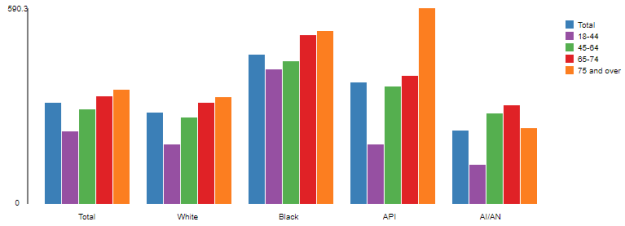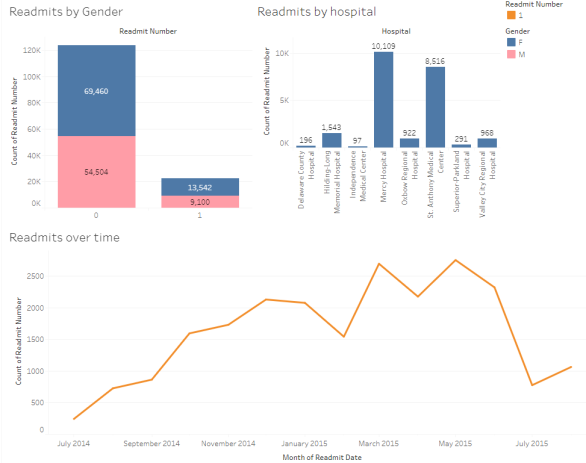Dashboard Benchmark Evaluation
| ✅ Paper Type: Free Essay | ✅ Subject: Information Systems |
| ✅ Wordcount: 1409 words | ✅ Published: 23 Sep 2019 |
Dashboard Benchmark Evaluation
Abstract
The use of dashboards can provide crucial information concerning an organizations metrics in meeting standards and benchmarks set by local, state and federal laws and policies. Examining diabetes quality measures compared to achievable benchmarks and standards helps to ensure patients receive the best attention and care possible. By meeting benchmark standards, it can also help hospitals control expenses. Healthcare organizations need and should be able to use this information. This information can be used to determine the most effective strategies for quality and performance improvement. This applies particularly to address the severity of the issues, the number of patient’s affected, financial impacts, stakeholder’s interests and measureable outcomes.
Keywords: diabetes, benchmarks, strategies
Mercy Medical Center Dashboard Benchmark Evaluation
The following diabetes dashboard information is supplied by Evelyn Unger, Senior Human Resources Generalist for Mercy Medical Center, a Vila Health affiliated hospital in Shakopee, Minnesota. In order to maintain its reputation as one of the region’s top choices for high quality health care it must meet and continue standards set forth by local, state and federal laws and policies. It already has the following distinctions: “Highest Safe Surgery Rating by a consumer advocacy magazine, Healthgrades Outstanding Patient Experience Award, Shakopee Ledger Top 20 Workplaces 2014 and 2015 and Women’s Choice Award for the Best Hospital for Patient Experience in Emergency Care” (media.capella, 2019).
The important thing to remember about diabetes is that it is primarily an inherited genetic and metabolic disorder. Unlike some traits, diabetes does not seem to be inherited in a simple pattern. Yet clearly, some people are born more likely to develop diabetes than others. There are many factors that contribute to diabetes, many controllable but other factors are not and include primarily age, gender, race and weight along with family history, this is what makes it so insidious.
The U.S. Department of Health & Human Services publishes the National Healthcare Quality and Disparities Reports. We can use the Diabetes Quality Measures Compared to Achievable Benchmarks to see NHQR’s conclusions. The NHQR contains information that is missing from the Mercy Hospital dashboard. Please see below …
(nhqrnet, 2019)

(nhqrnet, 2019)
We know that, Mercy Hospital addresses two very important areas of concerning diabetes, namely foot and HgbA1c exams it does not address all issues. Looking at other data it is worth noting that although no benchmark is currently available, it is a well-known fact that the largest and most important issue is that of kidney failure due to diabetes. Diabetes is the leading cause of kidney disease with 1 in 4 adults with diabetes having kidney disease. The estimate of 2378.1 far outstrips all others as can be seen in the table from NHQR above.
Challenges of meeting prescribed benchmarks can be difficult for any heath care organization. This is especially true for kidney disease and the ramifications that it entails. The assumptions of diabetes influence on kidney disease are well known and clinically provable.
“Kidney disease usually gets worse over time though treatment has been shown to slow progression. When the kidneys stop working, dialysis or kidney transplant is needed for survival. Kidney failure treated with dialysis or kidney transplant is called end-stage renal disease (ESRD). Not all patients with kidney disease progress to kidney failure and, in some patients, kidney disease progresses to kidney failure even with proper treatment” (cdc, 2018).
“Diabetic kidney disease is a type of kidney disease caused by diabetes. Diabetes is the leading cause of kidney disease. About 1 out of 4 adults with diabetes has kidney disease. The main job of the kidneys is to filter wastes and extra water out of your blood to make urine. Your kidneys also help control blood pressure and make hormones that your body needs to stay healthy. Kidney damage can also cause other health problems. Kidney damage caused by diabetes usually occurs slowly, over many years. You can take steps to protect your kidneys and to prevent or delay kidney damage. The best way to slow or prevent diabetes-related kidney disease is to try to reach your blood glucose and blood pressure goals. Healthy lifestyle habits and taking your medicines as prescribed can help you achieve these goals” (nih.gov, 2019).
In evaluating benchmark underperformance, race and age are prime examples, with Asian Pacific and Blacks being the most susceptible groups followed by Whites and Alaskan natives.
 (nhqrnet, 2019)
(nhqrnet, 2019)
It is also possible to compare at a national level those adults who received three recommended services i.e. eye, foot and HgbA1c tests. The HgbA1c for 2015 and ages 40-59 and 60 and over show 20.5% and 36.5% respectively. This is indicative of greater awareness
over previous years. Adults age 40 and over with diagnosed diabetes who received all four recommended services for diabetes in the calendar years 2008-2015 (2 or more hemoglobin A1c measurements, dilated eye examination, foot examination, and flu vaccination) are seen below …
A1C eye and foot examinations by age
 (nhqrnet, 2019)
(nhqrnet, 2019)
The two biggest areas of concern in the Mercy Hospital dashboard are the declining HgbA1c exams and the low foot exam rate. A1C levels especially help identify potential diabetes related complications early. By examining the severity of the issues and the number of patients affected and other factors such as financial impacts, stakeholders and measurable outcomes it is possible to construct an objective decision about possible improvements to evaluate Mercy Medical Center’s performance against local, state, and federal requirements.
The main beneficiaries in addressing benchmark underperformance are the stakeholders who in this case are the professionals at Mercy Hospital, namely the doctors and nurses that provide care. By addressing benchmark underperformance, readmission can be reduced and greater diagnosis accuracy achieved for the benefit of not only the patients but stakeholders thus creating a positive scenario for the patients and stakeholders and providing better overall care.
The biggest problem from uncontrolled diabetes, kidney failure has not been addressed and action is needed to improve diabetes prevention especially in the 21-44 year old range. Some data is simply not available since Mercy Hospital is theoretical in nature and as such it is impossible to find direct correlations. The two underperforming benchmarks in need of quality improvement are foot and HgbA1c exams. Quarterly A1C tests are especially relevant since hemoglobin cells are constantly dying and regenerating with a lifespan of approximately three months. Foot exams are needed quarterly to detect possible neuropathy, ulceration and trauma.
The bottom line is this, if you are 45 to 64 you are at highest risk, overall diabetes is equally prevalent among men and women in most populations. African Americans, Mexican Americans, American Indians, Native Hawaiians, Pacific Islanders and Asian Americans have a higher risk for type 2 diabetes. Finally, if your mother, father, sister, or brother has had diabetes, your risk goes up.
Appendix
Foot exams by date with live links: (Ctrl + Click to follow link)

https://public.tableau.com/profile/harold.a.hagood#!/vizhome/Unit3FootbyDate/Sheet2
A1C by date:

https://public.tableau.com/profile/harold.a.hagood#!/vizhome/Unit3A1CbyDate/Sheet2


https://public.tableau.com/profile/harold.a.hagood#!/vizhome/Unit3A1C/Sheet2
The following graphic is taken from a capstone thesis in Analytics by Hal Hagood. It is the result of exhaustive research on this subject as part of a comprehensive paper on diabetes and its implications. In reviewing this material additional data was found on Mercy Hospital and readmits by gender and hospital that are included below. Although readmits are not addressed in the Mercy Hospital dashboard, it is interesting to note that there were 10,109 readmits by Mercy Hospital and within the Vila Health system itself 69,460 males and 54,504 females during 2014-2015. All graphs are accessible at https://public.tableau.com/profile/harold.a.hagood#!/
 (Hagood, 2017)
(Hagood, 2017)
https://public.tableau.com/profile/harold.a.hagood#!/vizhome/unit10HalHagoodDashboard1/Dashboard1
References
- CDC, (2018). National Chronic Kidney Disease Fact Sheet, 2017. Retrieved January 12, 2019 from https://www.cdc.gov/kidneydisease/pdf/kidney_factsheet.pdf
- Diabeteseducator, (2019). The 2017 National Diabetes Statistics Report is Here. Retrieved January 11, 2019 from https://www.diabeteseducator.org/news/aade-blog/aade-blog-details/karen-kemmis-pt-dpt-ms-cde-faade/2017/07/26/the-2017-national-diabetes-statistics-report-is-here
- Hagood, H. (2017). Final Capstone Deliverables Due. Unpublished manuscript, Capella University.
- Media.capella, (2019). Vila Health: Dashboard and Health Care Benchmark Evaluation. Retrieved January 11, 2019 from https://media.capella.edu/CourseMedia/nhs6004element17010/transcript.asp
- nhqrnet, (2019). Diabetes Quality Measures Compared to Achievable Benchmarks. Retrieved January 12, 2019 from https://nhqrnet.ahrq.gov/inhqrdr/National/benchmark/table/Diseases_and_Conditions/Diabetes
- nih.gov, (2019). Diabetic Kidney Disease. Retrieved January 12, 2019 from https://www.niddk.nih.gov/health-information/diabetes/overview/preventing-problems/diabetic-kidney-disease
Cite This Work
To export a reference to this article please select a referencing stye below:
Related Services
View allDMCA / Removal Request
If you are the original writer of this essay and no longer wish to have your work published on UKEssays.com then please click the following link to email our support team:
Request essay removal


